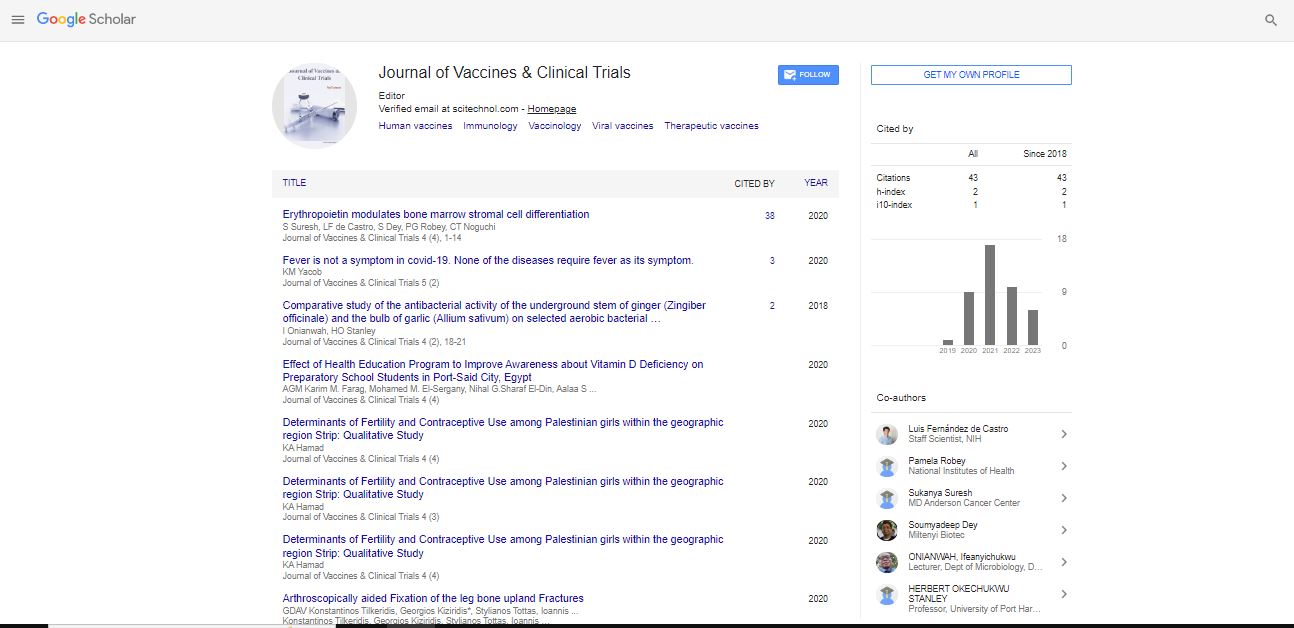Flu fighters: A transdermal microparticulate virus-like particle (VLP) vaccine for influenza
Keegan Braz Gomes
Mercer University, USA
: J Vacc Clin Trials
Abstract
Influenza is a viral respiratory infection that affects tens of thousands of people every year. Each year, the marketed influenza vaccines target the most commonly predicted strains. However, even with the moderate success of the 2019 flu vaccine at 47% protective, there still remains some shortcomings for the currently marketed flu vaccinations. Hence, to potentially overcome inssues with cross-protectivity, another approach involves utilizing a matrix protein, matrix-2 protein (M2e), which is a highly conserved protein in A strains of the influenza virus. To increase the immunogenicity of M2e, multiple repeats of the protein were combined to form a virus-like particle (VLP). The VLP was then encapsulated into a polymeric microparticulate (MP) formulation to improve uptake by antigen presenting cells (APCs) and induce long term antigen release in the body. Additionally, many individuals do not receive the flu vaccine currently because of invasive intramuscular injections. Therefore, the proposed VLP MP vaccine was delivered transdermally through various devices and vaccine.
Biography
Keegan Braz Gomes completed his Bachelor’s in Biology from the University of Massachusetts Amherst, USA. He is currently a PhD student in Pharmaceutical Sciences at Mercer University’s College of Pharmacy, Atlanta, Georgia. He is currently working on several projects focused on vaccine development for infectious diseases and drug addiction as well as brain targeting for therapeutic neuropeptides.
E-mail: Keegan.Brazgomes@live.mercer.edu
 Spanish
Spanish  Chinese
Chinese  Russian
Russian  German
German  French
French  Japanese
Japanese  Portuguese
Portuguese  Hindi
Hindi 